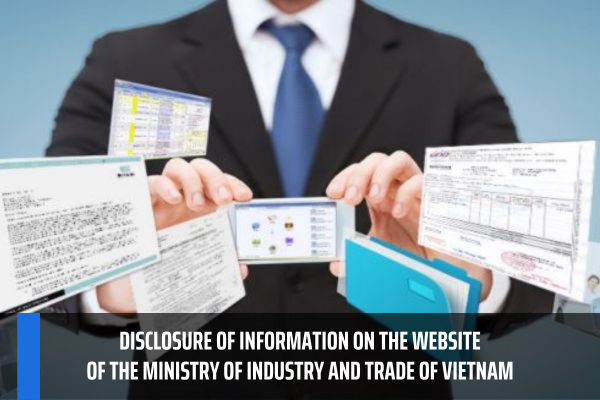Procedure for Issuing Electronic Notifications by Tax Authorities Regarding Electronic Invoices Sent to Taxpayers: How is it Done?
The procedure for issuing electronic notifications from tax authorities regarding electronic invoices sent to taxpayers
Based on Clause 4, Article 6 of the Procedure issued with Decision 1447/QD-TCT 2021, the procedure for issuing electronic notifications from the tax authorities regarding electronic invoices sent to taxpayers is prescribed for two cases as follows:
(1) For notifications signed by the head of the tax authority:
- The assigned official shall draft the notification to present to the department head. If the e-portal or the electronic invoice system automatically generates the notification, the assigned official shall review it before presenting it to the department head.
- If the department head agrees with the draft notification presented by the official, the department head will approve and present it to the head of the tax authority (or the person assigned or authorized by the head of the tax authority) for issuance.
- If the head of the tax authority (or the person assigned or authorized by the head of the tax authority) agrees with the draft notification presented by the department head, they will approve and digitally sign the notification.
- The official responsible for clerical work shall assign a document number and digitally sign the tax authority’s digital signature on the notification on the same day the head of the tax authority (or the person assigned or authorized by the head of the tax authority) digitally signs the notification.
- The e-portal will automatically send the notification to the taxpayer within 15 minutes from the time the official responsible for clerical work assigns the document number and digitally signs the tax authority’s signature, following the method prescribed in Clause 3 of this Article.
The presentation, approval, and digital signing time for the official, department head, and head of the tax authority (or the person assigned or authorized by the head of the tax authority) are specifically prescribed in Chapter II of this Procedure for each type of notification.
(2) For notifications not signed by the head of the tax authority:
- The e-portal or the electronic invoice system automatically generates the notification.
- The e-portal automatically uses the authorized signature of the General Department of Taxation to sign and automatically send it to the taxpayer following the method prescribed in Clause 3 of this Article.

Procedure for issuing electronic notifications from tax authorities regarding electronic invoices sent to taxpayers
Principles for synchronizing data from business software applications to the e-portal and electronic invoice system
Based on Clause 5, Article 6 of Decision 1447/QD-TCT 2021, it is prescribed as follows:
General principles applicable to the e-portal and electronic invoice system
...
5. Principles for synchronizing data from business software applications (TMS, TTR, TPR, ETAX) to the e-portal and electronic invoice system:
- The synchronized data shall be the data updated into the business software applications according to the related tax management procedures.
- Synchronization frequency: 2 times per day.
- Synchronization times:
+ 00:00 to 01:00: First synchronization of the day for data entered into the business software applications from 12:00 to 24:00 of the previous day;
+ 12:00 to 13:00: Second synchronization of the day for data entered into the business software applications from 00:00 to 12:00.
The synchronization of data from business software applications (TMS, TTR, TPR, ETAX) to the e-portal and electronic invoice system follows these principles:
- Only synchronize data that have been updated into the business software applications according to the related tax management procedures.
- Synchronization frequency is 2 times per day.
- Synchronization times:
+ The first synchronization of the day for data entered into the business software applications from 12:00 to 24:00 of the previous day occurs from 00:00 to 01:00:
+ The second synchronization of the day for data entered into the business software applications from 00:00 to 12:00 occurs from 12:00 to 13:00.
What information is recorded on the invoice?
Based on Article 10 of Decree 123/2020/ND-CP, the content recorded on the invoice is prescribed as follows:
- Invoice name, invoice symbol, invoice template number symbol. Specifically:
+ The invoice name is the name of each type of invoice stipulated in Article 8 of this Decree, as indicated on each invoice, such as: Value-added tax invoice, value-added tax invoice cum tax refund declaration, value-added tax invoice cum receipt, sales invoice, sales invoice of public property, stamps, tickets, cards, national reserve sales invoices.
+ Invoice template number symbol, invoice symbol as guided by the Ministry of Finance.
- The name of the invoice copies applicable to the invoices printed by the tax authority as guided by the Ministry of Finance.
- Invoice number
- The name, address, tax code of the seller
- The name, address, tax code of the buyer (if any)
- The name, unit of measure, quantity, unit price of goods and services; amount excluding value-added tax, value-added tax rate, total value-added tax amount by each tax rate, total value-added tax amount, total payment amount including value-added tax.
- Signature of the seller, signature of the buyer
- The invoice issuance time is in the format of day, month, year of the Gregorian calendar.
- The digital signature time on the electronic invoice.
- Tax authority’s code for electronic invoices with the tax authority’s code.
- Fees, charges belonging to the state budget, commercial discounts, promotions (if any).
- The name, tax code of the organization that receives the invoice for the printed invoices by the tax authority.
- Text, number, and currency on the invoice
- Other contents on the invoice such as information on logos to represent brand names, trademarks, or representative images of the seller.
LawNet



